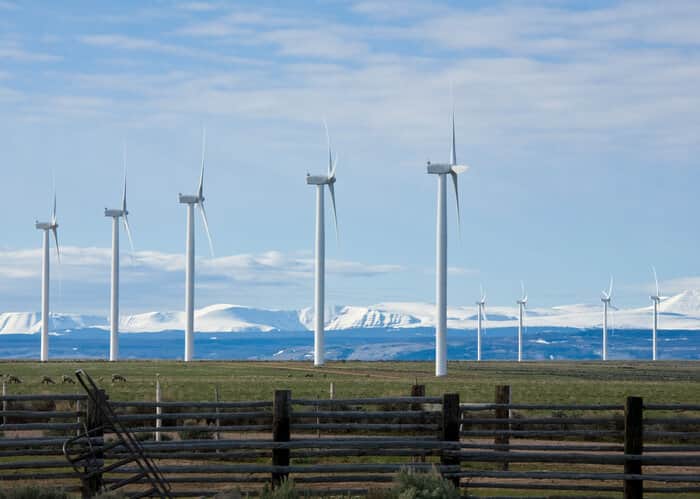Rocky Mountain Power has laid out a 20-year, $3.5 billion initiative that includes adding more wind and solar and making existing wind turbines more efficient. In addition, the plan incorporates building a segment of a transmission line to facilitate the wind expansion.
The integrated resource plan (IRP), filed with utility regulators, is used as a road map to help Rocky Mountain Power provide reliable electric service to customers at lower costs, the company says. Part of PacifiCorp, Salt Lake City-based Rocky Mountain Power provides electric service to approximately 1.1 million customers in Idaho, Utah and Wyoming.
The 2017 IRP includes upgrading more than 900 MW of existing wind projects with larger blades and newer technology in order to generate 20% more energy in a wider range of wind conditions, as well as capture federal production tax credits, the company says.
Further, the plan calls for beginning construction on a segment of the 500 kV Gateway West transmission line, located between Medicine Bow, Wyo., and the Jim Bridger power plant in the southwestern part of the state. According to Rocky Mountain Power, the 140-mile line would enable additional wind generation, improve efficiency and relieve transmission congestion.
Under the plan, the company would also facilitate the construction of up to 1.1 GW of new wind projects – primarily in Wyoming – by the end of 2020. Likewise, these would also capture federal tax credits for customers.
In addition, up to another 859 MW of new wind would be built between 2028 and 2036: 85 MW in Wyoming and 774 MW in Idaho.
On the solar side, the plan calls for building up to 1.04 GW of new solar between 2028 and 2036. Approximately 77% of the solar would be built in Utah, and 23% would be built in states served by Pacific Power.
Continuing a “cost-conscious transition that adds more energy diversity,” says Rocky Mountain Power, the plan also incorporates the company’s environmental compliance obligations for its coal plants. Energy efficiency will also continue to play a key role in the company’s long-term plans.
“This plan provides more diversity in the energy we use, which helps us keep electricity prices low for customers and improves the economies of our states,” says Cindy A. Crane, Rocky Mountain Power’s president and CEO. “The proposal is also a major investment that will produce more jobs, provide a stronger tax base and build transmission lines that will deliver reliable energy more efficiently for years to come.”
Wyoming Gov. Matt Mead adds, “This ambitious plan – a nearly $3 billion investment in Wyoming – diversifies Wyoming’s economy, expands markets, presents workforce training opportunities, adds jobs and strengthens the tax base in local communities. I look forward to working closely with Rocky Mountain Power. I see great potential for Wyoming workers and ratepayers as this plan is implemented.”
The full 2017 IRP can be found here.




